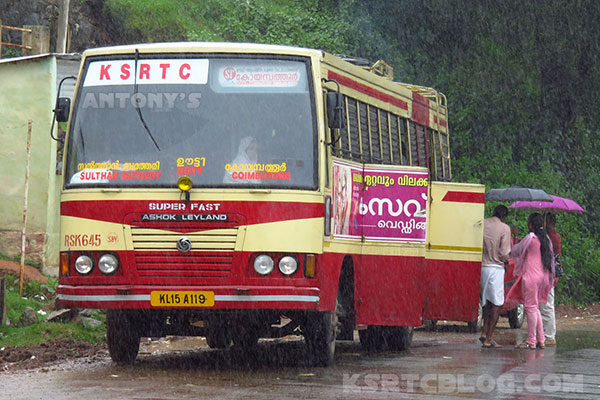Travelling by bus in South India was a very different experience from the typical bus experience you get in North America. Sure there are similarities and these include the fact that the bus takes you from point A to point B, it costs money, and you’re required to share the bus with fellow passengers. However, the South Indian bus experience, for better or worse, seems to be so much more. Before getting into the details, I should clarify what exactly I’m referring to when I say bus travel in South India: The buses I’m referring to are the regional or city buses that seem to be the most common ones spotted on the roads of South India. They differ from the class of bus known as Luxury Buses (which also operate in South India and resemble the larger regional buses found on roads in North America) in that they’re smaller and they’re non-AC.

So, just what is it about the South Indian bus experience that is so different? Here are a few examples.
Get Ready to Sweat
It’s hot and sometimes very humid in South India (even in the winter months), but that’s not the only reason you’ll be sweating. The bus trip will have you sweating as a result of the considerable amount of effort required to stay in your seat as the bus bounces up and down and from side to side. Just as the bus drivers brace themselves against the frame of the bus with their right hand when they make a hard left turn, you’ll be holding on for dear life on the bar that sits on the back of the seat in front of you. Some people even seem to manage to hold on as they sleep!
The “Rules” of the Road
We’ve seen many examples in India of how the rules of the road, as we know them, are simply disregarded or not enforced. For example, the lines on the road are merely a suggestion and cars, motorized rickshaws, and motorcycles eager to pass will hang well over the centre line despite the presence of oncoming traffic. Yet, despite the appearance of what seems like chaos on the road, there does indeed seem to be some sort of dance or ritual that occurs between drivers that ensures that the risk of accident is somewhat reduced. The buses are key participants in this dance and they tend to lead due to their size. Rickshaws and even cars are pushed off of the road as buses veer into the oncoming lane to overtake the vehicle in front of them. Of course, this never occurs without warning as buses, like almost all of the other vehicles on the road, seem to sound their horn non-stop.
Ask Someone. Anyone!
Finding our bus when we arrived at the bus stand/station at first seemed hopeless given that the vast majority of the buses seemed to be devoid of signs indicating direction or destination. The one ‘information’ kiosk that we spotted at one station seemed to have been last staffed when India was still a colony of Great Britain. So, what does one do in that case? Not surprisingly, it seems that asking just about anyone at the bus stand will do the trick. This strategy proved to be an efficient and effective means of getting on the right bus. In fact, people went out of their way to march us over to the right bus all the while enduring what must have been the annoying refrain of me repeating the sought after destination in an effort to ensure that we got on the correct bus. Repeating and clarifying expectations seems to work well in management so why not at the South Indian bus stand?!
It’s Cheap and Decorations Come Included
Regional bus transport in South India is cheap relative to North America. For example, a 100km bus ride will run you around 60 rupees or $1.20 CAD. So, while the drive can sometimes be nausea inducing, it’s somehow not as bad when you consider how much you’ve actually paid to get to your destination. Also, a lot of buses have statuettes of Ganesh (the elephant god) elaborately decorated and on display at the front of the bus. It’s pretty cool!

While there were times when I very much missed Canadian buses (city or Greyhound) and roads, the South Indian bus experience was great. Always choosing to travel by day, it afforded us some incredible views of the spectacular Indian countryside. Also, we feel that our bus journeys allowed us to experience how a significant portion of the population get around. Finally, the buses provide a significant amount of entertainment. For example, it’s incredible to watch the driver do his thing (i.e. avoiding collisions and keeping the bus on the road) as well as the ticket agent who is required to dispense tickets, take money, provide change (if necessary), and open the back door to let people on or off the bus, all while keeping his or her balance as the bus speeds down the often windy and bumpy road. It was amazing to see.
So, if you go to South India and you decide to travel by regional bus, remember to following:
- Keep your anti-nausea pills handy
- Be prepared to state what country you’re from when your seat mate looks at you and says: “From?”
- Any seat or space that you give up, even momentarily, you should consider gone for good. Remember that seat mate? That’s right, they now own that real estate.
Most importantly… Enjoy the physically demanding, intense, and inexpensive ride!
By: Eric Daye


















